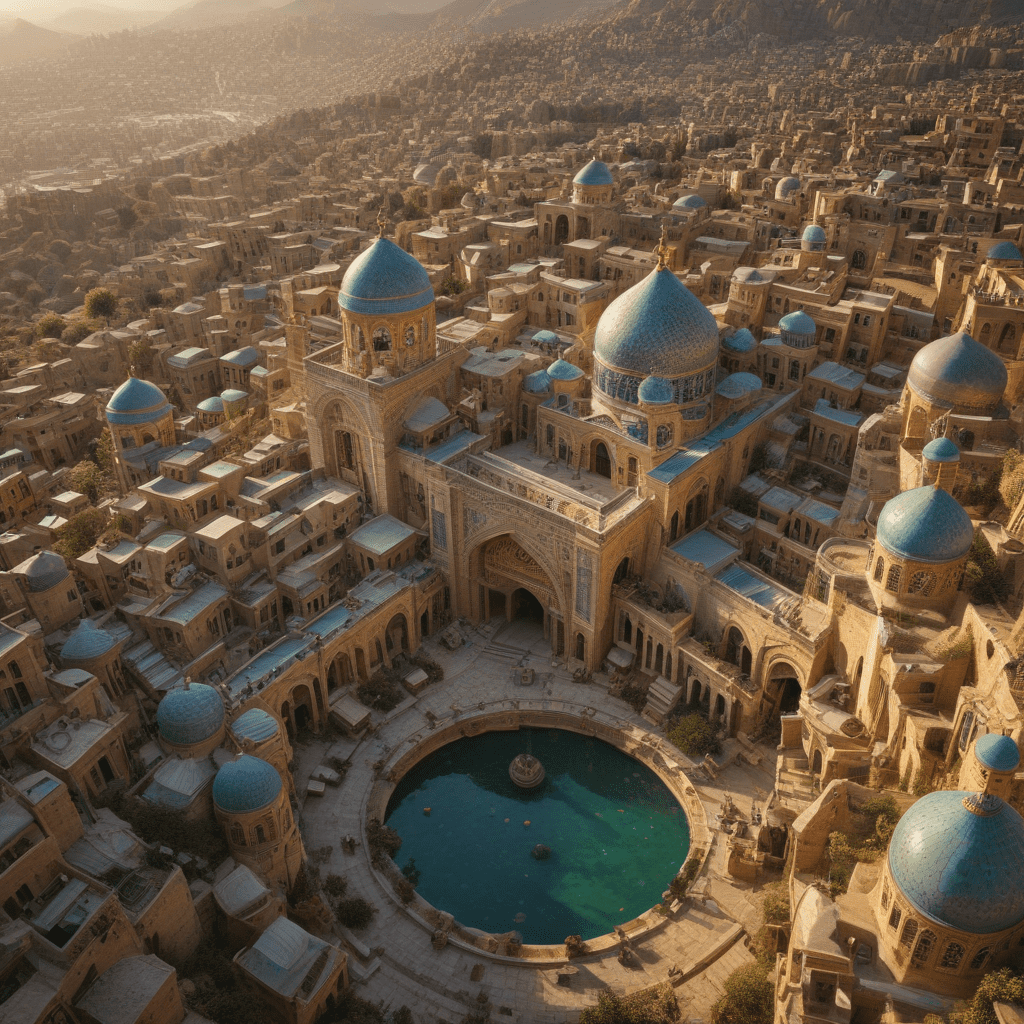The Mythical Cities of Persian Legends
Myths and legends have played a central role in shaping Persian culture, offering insights into the people's beliefs, values, and aspirations. Among these fascinating narratives, the concept of mythical cities stands out as a recurring theme, capturing the imagination of generations. These legendary cities, often shrouded in mystery and wonder, embody the dreams and desires of a people yearning for a better world.
In this article, we will delve into the enchanting realm of Persian legends, exploring some of the most captivating mythical cities that have captivated audiences for centuries. Join us as we uncover the secrets of Shambhala, Jinnestan, Var, Ganj Dareh, and Siavashgard, and discover the timeless allure these cities hold.
1. Introduction:
Persian mythology is a rich tapestry of stories, poems, and legends that have been passed down through generations. These narratives offer a glimpse into the beliefs, values, and aspirations of the Persian people, shedding light on their understanding of the world and their place within it. Among these diverse tales, the concept of mythical cities stands out as a recurring theme, capturing the imagination of audiences for centuries.
These legendary cities, often shrouded in mystery and wonder, embody the dreams and desires of a people yearning for a better world. They represent places of refuge, where justice prevails, knowledge abounds, and peace reigns supreme. In these mythical realms, the boundaries between reality and fantasy blur, inviting us to explore the depths of human imagination and the enduring power of storytelling.
In this article, we will embark on a journey to uncover the secrets of some of the most captivating mythical cities in Persian legends. We will explore the hidden city of Shambhala, said to be a spiritual sanctuary; the realm of Jinnestan, inhabited by supernatural beings; the magnificent city of Var, built by the legendary king Keykavous; the treasure valley of Ganj Dareh, guarded by mythical creatures; and the idyllic city of Siavashgard, a symbol of peace and prosperity.
Through our exploration, we will discover the profound significance these cities hold for the Persian people, their connection to ancient beliefs and traditions, and the timeless allure they continue to exert on our imaginations. As we delve into the rich tapestry of Persian mythology, we will gain a deeper understanding of the cultural heritage and the enduring power of storytelling.
Join us as we embark on this captivating journey into the world of mythical cities, where the boundaries between reality and fantasy blur, and the wonders of imagination come to life.
8. The City of Siavashgard
A Haven of Peace and Justice
The mythical city of Siavashgard, immortalized in the Shahnameh, stands as a testament to the values of peace, justice, and prosperity. Founded by the righteous hero Siavash, this city embodies the ideals of a utopian society, where harmony and order prevail.
Within its walls, residents live in contentment, free from the evils of war, oppression, and injustice. The city's prosperity is evident in its flourishing agriculture, thriving trade, and abundance of resources. Siavashgard represents a beacon of hope, a utopia where humankind can live in unity and harmony.
A Symbol of Hope
Siavashgard's significance extends beyond its physical attributes. It serves as a poignant reminder of the unwavering human spirit's ability to strive for a better world. The city's existence inspires generations to pursue justice, peace, and prosperity, offering a vision of a society where human potential can flourish.
Furthermore, Siavashgard stands as a testament to the transformative power of love and forgiveness. Siavash's journey is marked by suffering and betrayal, yet he chooses forgiveness and peace. His actions pave the way for the creation of Siavashgard, demonstrating the potential for redemption and the power of overcoming adversity.
A Legacy of Inspiration
The city of Siavashgard continues to resonate with audiences today, offering a timeless message of hope and resilience. It reminds us that even amidst hardship and darkness, the human spirit can strive for a better world, where peace, justice, and prosperity prevail. Siavashgard serves as a beacon, guiding us towards a future where the ideals of harmony and unity can become a reality.
9. Conclusion:
The mythical cities of Persian legends offer a captivating glimpse into the rich tapestry of Persian culture and mythology. These cities, though fictional, embody the dreams, aspirations, and values of the Persian people. Each city holds a unique significance, representing a realm where justice, knowledge, peace, or prosperity prevails.
From the hidden sanctuary of Shambhala to the enchanted realm of Jinnestan, from the magnificent city of Var to the treasure valley of Ganj Dareh, and finally, the idyllic city of Siavashgard, these mythical cities continue to capture our imagination and inspire us to strive for a better world.
As we conclude our exploration of these enchanting realms, we carry with us the timeless wisdom and inspiration they offer. The mythical cities of Persian legends serve as a reminder of the human spirit's enduring capacity for wonder, imagination, and the pursuit of a more just and harmonious world.
10. FAQs:
Q: What is the significance of mythical cities in Persian culture?
A: Mythical cities play a central role in Persian culture, embodying the dreams, aspirations, and values of the Persian people. They represent places of refuge, where justice prevails, knowledge abounds, and peace reigns supreme.
Q: What are some of the most famous mythical cities in Persian legends?
A: Some of the most famous mythical cities in Persian legends include Shambhala, Jinnestan, Var, Ganj Dareh, and Siavashgard.
Q: What are the key characteristics of these mythical cities?
A: The key characteristics of these mythical cities vary, but they often include hidden locations, magical inhabitants, and unique architectural features. They represent a realm where the boundaries between reality and fantasy blur, and the wonders of imagination come to life.
Q: What is the significance of these mythical cities today?
A: The mythical cities of Persian legends continue to resonate with audiences today, offering timeless messages of hope, inspiration, and the pursuit of a better world. They remind us of the human spirit's enduring capacity for wonder, imagination, and the pursuit of a more just and harmonious world.



